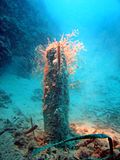Costa Concordia disaster
On 13 January 2012, the Italian cruise ship Costa Concordia hit the bottom of the sea floor and overturned after striking an underwater rock off Isola del Giglio, Tuscany, resulting in 32 deaths.
 Aground with rigid lifeboats in foreground and inflatables hanging from the side of the ship | |
| Date | 13 January 2012 |
|---|---|
| Coordinates | 42°21′55″N 10°55′18″E / 42.36528°N 10.92167°ECoordinates: 42°21′55″N 10°55′18″E / 42.36528°N 10.92167°E |
| Type | Ship grounding |
| Cause | Struck a rock while deviating from planned course |
| Participants | 4,252 (3,206 passengers; 1,023 crew and personnel) |
| Non-fatal injuries | 64 |
| Captain | Francesco Schettino |
| Operator | Costa Crociere |
| Salvage |
|
The eight year old Costa Cruises vessel was on the first leg of a cruise around the Mediterranean Sea when she deviated from her planned route at the Isola del Giglio, sailed closer to the island, and struck a rock formation on the sea floor.
A six-hour rescue effort brought most of the passengers ashore.
Many blamed the ship's captain Francesco Schettino, who left the ship shortly after the sinking began leaving behind the crew and passengers.[1][2]
Costa Concordia Disaster Media
Profile of stranded wreck with surrounding oil booms
Giant fan mussel of the type relocated away from the Costa Concordia wreck for fear of the threat posed by subsequent engineering work
Rightening of Costa Concordia - stage 1 of 4. A process called parbuckling used pulling cables and metal boxes with water and welded to the ship's sides to roll it upright. The procedure took 19 hours to complete at Giglio island. Once the ship had rotated to 25 degrees, no further pulling was required as it continued to rotate under its own weight.
Rightening of Costa Concordia - stage 2 of 4. A process called parbuckling used pulling cables and metal boxes with water and welded to the ship's sides to roll it upright. The procedure took 19 hours to complete at Giglio island. Once the ship had rotated to 25 degrees, no further pulling was required as it continued to rotate under its own weight.
Rightening of Costa Concordia - stage 3 of 4. A process called parbuckling used pulling cables and metal boxes with water and welded to the ship's sides to roll it upright. The procedure took 19 hours to complete at Giglio island. Once the ship had rotated to 25 degrees, no further pulling was required as it continued to rotate under its own weight.
Righting of Costa Concordia, stage 4 of 4. A process called parbuckling used pulling cables and steel sponsons welded to the ship's sides and filled with water to roll it upright. The procedure took 19 hours to complete at Isola del Giglio. Once the ship had rotated to 25 degrees, no further pulling was required, as it continued to rotate under its own weight.
References
- ↑ John Hooper (24 January 2012). "Costa Concordia captain not solely to blame, says prosecutor". The Guardian. https://www.theguardian.com/world/2012/jan/24/costa-concordia-captain-blame-prosecutor. Retrieved 26 January 2012.
- ↑ Jones, Gavin; Denti, Antonio (15 January 2012). "Two more bodies found on ship, three people rescued". Reuters. https://www.reuters.com/article/2012/01/15/us-italy-ship-idUSTRE80D08220120115. Retrieved 24 February 2012.









